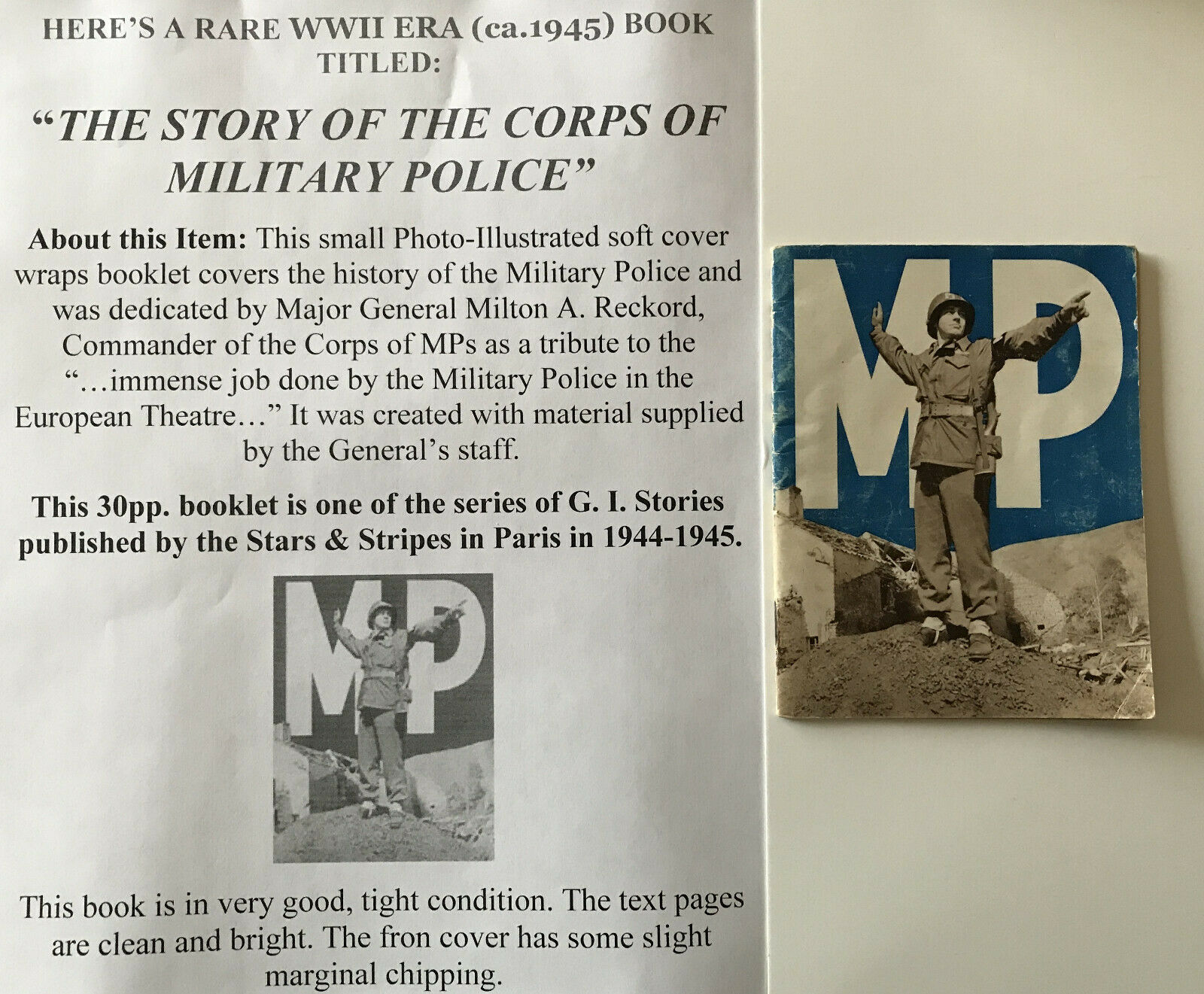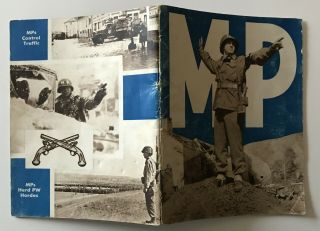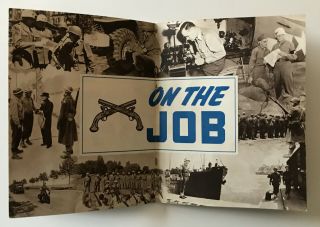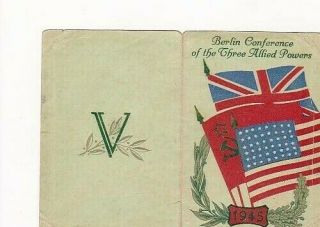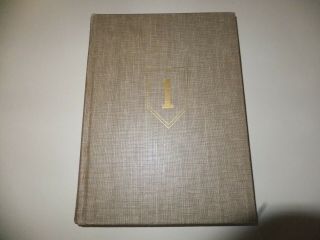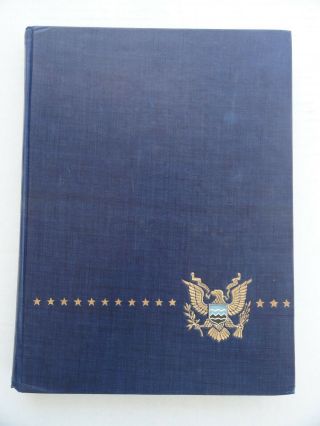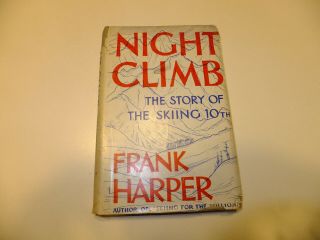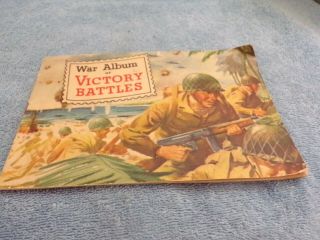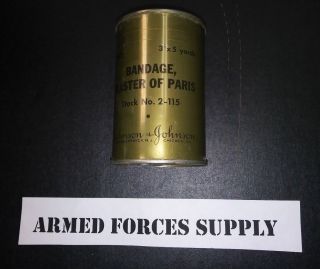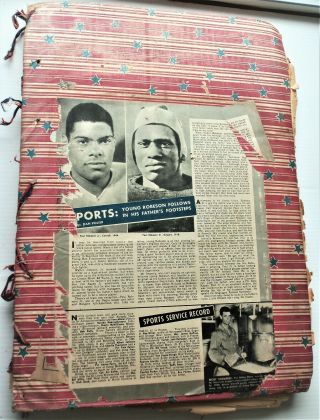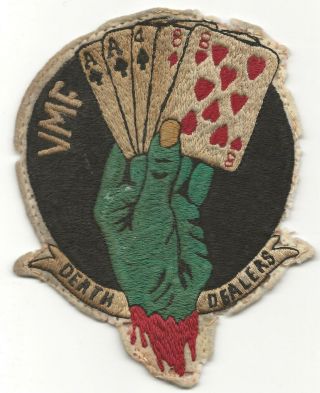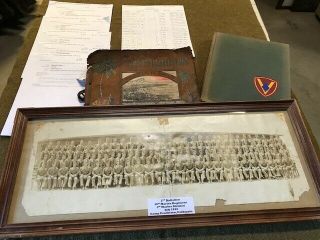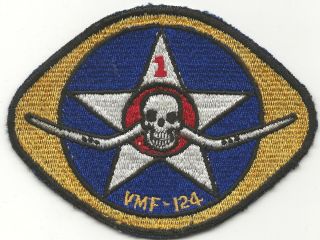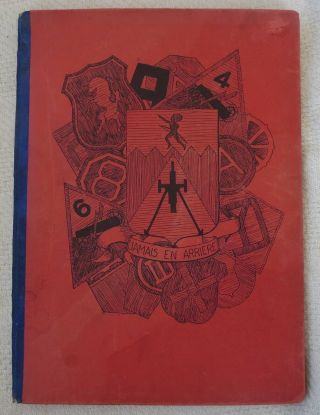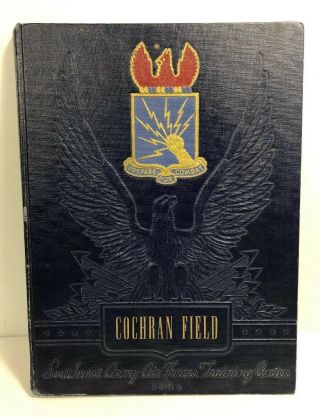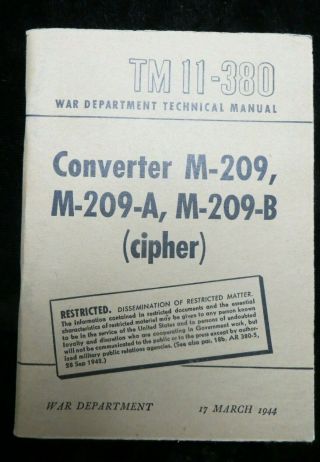WWII 1945 THE STORY OF THE CORPS OF MILITARY POLICE PHOTO ILLUS MP HISTORY BOOK
Item History & Price
| Reference Number: Avaluer:15464762 | Modified Item: No |
| Country/Region of Manufacture: United States |
Major General, Commanding THE STORY OF THE CORPS OF MILITARY POLICE I NFANTRYMEN often have described the Corps ofMilitary Police as the soldiers who posted "Off Limits" signs evenbefore towns were liberated. But there's one place where doughs found no signs;there were no complaints about the early presence of MPs. That was the Normandybeaches.MPs crossed those narrow belts of sand at H-Hour, D-Day, and began clearing vehicles from the beaches, evacuating wounded, guarding prisoners in an improvised cage, unloading shells. In the pre-dawn airinvasion, MPs had come in fighting with the 82ndand 101st AirborneDivisions.They were not immune. The same murderous fire caughtthem as well as their infantry buddies. In some ways it was even tougher forthe MP. Once posted, he had to stand up and take it. His duty didn't allow himto duck into a foxhole. If he became, a casualty, another MP replaced him.Pvt. Neil Dawson. San Antonio, Tex., a V Corps MPwas typical. Acting as a beach guide, he was exposed to continuous artilleryand small arms fire for eight hours. Before that, Dawson and Pvt. Jack F.Conrad, Sunbury, Pa., of the same platoon, unloaded mortar ammunition from anLCT plastered by enemy fire.Wounded in the shoulder as he leaped from hislanding craft, 1st Lt. Charles M. Conover, 1st Inf. Div.MP, directed and organized traffic three hours before collapsing. He wasawarded the Silver Star.M/Sgt. Edward Lopes, V Corps MP, led his detachmentashore in the assault and posted men within 100 yards of the enemy where theydirected combat soldiers along the safest routes of advance. Men under Sgt.Nicholas T. Kinderknecht guided traffic from the beach to assembly points andevacuated wounded from the water and nearby front lines while dodging machinegun fire.Helping division, Corps and Army MPs were especiallytrained amphibious MP companies—the 210th, the 214th and 449th—normallyassigned to Corps but now attached to the famed Engineer Special Brigades.These outfits, experts on beach traffic, were in at the beginning.D-Day traffic wasn't the only problem. Increasingnumbers of PWs jampacked cages. Immediate help was imperative. Late in theafternoon, June 6, 1944, the 302nd MP Escort Guard Co., composed of 57 percentlimited service men, came ashore. The unit suffered casualties in men andequipment before relieving 1st Inf. Div.MPs of their stockade responsibility. Several days later, the 595th took chargeof three beach evacuation pens while the 301st was busily occupied with PWs inanother sector. Supposedly, these were Com Z units.Cos. C and D, 783rd MP Bn., directed beach trafficon D plus 4, and the entire battalion, along with the 713th, followed Armiesthereafter.MPs looked the enemy in the teeth and hit back thebest way they knew how on that memorable D-Day. They guided doughs from beachdeath traps to rendezvous points. Airborne MPs engaged in close-in fightingwith the 101st A/B Div.With traditional thoroughness, MPs turned in a jobwell done, a performance which was to he repeated many times—repeated duringvon Rundstedt's famous break-through drive in December, 1944.During the crucial hours of the German drive, theCorps of Military Police, with units assigned to every echelon of command, became a prime controlling influence—the pivot on which the holding andregrouping of American troops depended.MPs kept a firm grip on traffic, ignoring enemyartillery zeroed on vital road intersections. Pfc George F. Swearingen, Byronville, Ga., 2nd Inf. Div., drove up to Post 8, Camp d'Elsenborn, Belgium, through which essential trafficwas moving. There were two wounded MPs and a third suffering from shock when hetook over amidst artillery bursts. Twice wounded, Swearingen stuck to his post, preventing a traffic snarl that would have caused many casualties both in menand equipment.Others led outfits to battle, lines. S/Sgt. FloydCalloway, Pfc Fred J. Warner and Pfc Henry F. Gozdan, all of the 803rd MP CorpsCo., escorted the 7th Armd. Div. along N-32 until contact was made with enemytanks near Waimes.In another sector, Third Army, in a stream ofveteran infantry and armored units, began a northward movement. Half-tracks, two and a half ton trucks, tanks, jeeps, clogged the roads. Traffic jams seemedinevitable. But the inevitable didn't happen!Brig. Gen. Hobart R. Gay, Gen. Patton's chief ofstaff, commending the 503rd and the 512th MP Bns. (the latter now possesses theMeritorious Service Unit Plaque), praised them for their "extremelyefficient and untiring efforts in expediting the recent heavy movement oftroops in the Third Army area..."In First Army's sector, the situation confrontingthe 509th and 518th MP Bns. was acute. In the area between Corps and Army rearboundaries, traffic was excessive, enemy agents were at large; localinhabitants were frightened, restless.Co. B, 518th MP Bn., recorded: "First Army rearechelon units were ordered to evacuate... MPs were the only military units onduty. They were the sole means of liaison to incoming combat teams... MPstracked down all reports of enemy infiltration and action... organized andcontrolled all Belgians in the area..."At Spa, Lt. Dean W. Nelson's 3rd Platoonrounded up 21 released collaborators and calmed the civilian populace. By Dec.19, Lt. John Kolodziejski's 1st Platoon were the only troops in Rochefort... AtMarche, with the exception of the 51st Engrs. and the MPs, all other militaryunits had evacuated... Engineers engaged the enemy east of Hotton... MPs weresubject to enemy tank and small arms' fire, bombing, strafing and buzz-bombing..."Further back, Com Z MPs perfected a tight securitynetwork, with rear area defense largely the Provost Marshal's responsibility.MP battalions posted heavy guard on all key bridges; patrols scoured thecountryside for parachutists and enemy agents; road blocks were thrown up fromArmy zones through Paris to the coast.This vigilance trapped many disguised Krauts. S/Sgt.Richard Hallman, and Sgt. Walter A. Sowinski, Long Island, N.Y., 783rd MP Bn., in Advance Section, knocked off a fleeing German after they had teamed up withBritish troops to capture three Nazis in a stolen jeep.Pfc Donald E. McHenry, Berwick, Pa., spotted afast-moving quarter-ton, waved it to a stop at Liege, Dec. 19. When S/Sgt LeonM. Hansen, Muskegon, Mich., questioned the occupants—an officer and threemen—he signalled for support. Sgt. Walter Staiger, Brooklyn; Pfc Albert Dial, Oxford, Ga.; Pfc Lars Johnson, Seattle, and Pfc. Alex Molnar, Detroit, gottrigger fingers ready.These 769th Bn. MPs had snared a prize—four spies giventhe job of sabotaging vital material and bridges. In the vehicle were more thanenough arms and explosives to wipe the MPs off the map.When infantrymen stormed ashore D-Day in SouthernFrance, Aug. 15, 1944, MPs again gave efficient support, following up the 6thArmy Group's lightning sweep inland. With the junction of the twin Americanthrusts in France, Brig. Gen. Joseph V. Dillon's MP organizations came undercontrol of the Theater Provost Marshal and Gen. Dillon became Deputy TheaterProvost Marshal.Top Priority — Keep Traffic Moving! K EEP traffic moving safely, " echoed MPs in basictraining. "Give this duty top attention, for tactical success often hingeson this factor." And MPs gave all they had...March 1, 1945, 0200 hours: The 9th Inf. Div.MP platoon was charged with the responsibility of traffic control at theLudendorff Bridge, Remagen, Germany. MPs were stationed at the approaches andout on the uncertain span itself. Intense artillery fire from aroused Germansrained down. Posts were maintained 24 hours a day as MPs evacuated wounded, laid communication lines, removed knocked-out vehicles. Traffic had to keepflowing—flowing fast. One MP raced to a blazing tank, climbed inside, rescued atrapped crew member.Four days later, the platoon, relieved of its task, had a slight breathing spell. It counted its casualties—14 wounded, two killed.During the height of the Battle of the Bulge, PfcAnthony Onica, Highland Park, Mich., 2nd Inf. Div., directed traffic on a Belgian road. An enemy plane strafed the intersection, but Onica clung to his post. When a lull in traffic came, he stepped off theroad to get minimum cover. Enemy fire killed him.MPs often had to be resourceful to prevent traffictie-ups. Sgt. Warren H. Ecke, Teaneck, N.J., and men of 3rd Platoon, Co. A, 509th MP Bn., learned the value of alternate routes in a matter of minutes.When a German aerial bomb exploded on a vital highway near Vermers, Dec. 20, and traffic couldn't be delayed, MPs located, posted and began operating are-route. Ten minutes later a blast reduced this to uselessness. Opening asecond alternate, the men kept their fingers crossed.MPs doubled as infantrymen, then coolly returned totraffic duties more than once during the hurried journey across France.Pfc John W. Wisdom, Denver, Colo., and Pfc WilliamA. Cooper, Sacramento, Calif., 2nd Armd. Div. MPs, observed an enemycounter-attack pushing towards their traffic control post at Beffe, Belgium.Borrowing an M-1, Wisdom attached himself to a platoon of advancing doughswhich soon was pinned down by machine gun fire. In the ensuing battle, thistraffic pointsman accounted for three Germans.Combat teams looked on armored MPs as friends, willing to lend a hand when the going was hot. Sometimes, MPs rode the backs oftanks with a task force.When retreating Nazis destroyed a bridge at Creon, France, Aug. 6, advanced elements of the 5th Armd. Div. came to an abrupt halt.The division MP platoon found a detour for the troops, then gave anti-sniperprotection to the engineers building a treadway bridge.MP platoons assigned to infantry divisions encounteredsimilar experiences. At Dinant, Belgium, 9th Inf. Div.MPs, under Sgt. John C. Mantegna, helped engineers with their first bridgeacross the Meuse. Reaching the east bank, MPs were deployed to provide securitywhile engineers finished the ponton span.Eighth Inf. Div.MPs never will forget Hurtgen Forest. Pfc Ottis Brewer, Jackson, Ky., stood ina foot of mud four hours while directing the 709th TD Bn. into its area.When 8th Inf. Div.MPs arrived, the crooked, narrow roads were slimy morasses, splotched withcraters, tree trunks, swollen streams. Three divisions had churned up the roadsand engineers saw no end to their work.First Lt. Robert L. Perrin, Howard, Kan., and Sgt.Harry Fenzlein, Fairlawn, N.J., kept MPs going 24 hours a day, directingoutgoing units, clearing the roads for ambulances, setting up traffic posts."Weasels, " tanks, TDs and jeeps hadchurned through mud to log trails. Sgt. Esse Lewis, Jacksonville, Fla., led644th TD Bn. M-10s to their area. Mortar shells burst against tree tops, splattering troops with metal and wood fragments. CC R of the 5th Armd. Div.entered the vicinity as eight miles of tanks, 90mm TDs, armored infantryhalf-tracks, tank retrievers, ground into position through the night. MPsstaked the line of departure with delineators. In pitch darkness they usedmasked flashlights to guide Shermans that were wider than the roads. PfcWinfield Bogert, Allentown, Pa., and Sgt. Donald Gruner, Patterson, N.J., sweated over 11 Shermans, four M-30 TDs, and 14 half-tracks, which slipped intoa washout twice and nearly crushed them.CC R was ready at daylight, but MPs still couldn'trest. It was time to handle the normal supply.Lt. Perrin and Cpl. George Buhler, Passaic, N.J., led tanks into battle Nov. 25, but couldn't crack enemy defenses. Reinforced, they tried again four days later and succeeded. As armor slashed ahead, muddy, bearded MPs gave them the right-of-way. Jams, mines, shells were overcome astraffic of three divisions and an adjacent Corps rolled through to the front.For nine days this nightmare continued before Hurtgen Forest was cleared.Enemy 88s, at one to two minute intervals, shelledthe traffic flow in the Roer River sector. Drivers stopped, leaped for cover, leaving some vehicles parked bumper to bumper. Germans increased the rate offire.Cpl. Robert T. Peterson, 102nd Inf. Div. MP Platoon, covered the area near his post and persuaded drivers to return, disperse theirvehicles. Pfc Albert C. Howell, reliefman, alternately running and flopping tothe ground as shell fragments whistled by, sprinted to the most prominent knotof vehicles. Finding the drivers, he went from foxhole to foxhole, urging themto scatter their trucks. When the jam finally was broken and the artillery fireceased, only four vehicles were damaged.Once posted, the traffic MP accepts a tremendousresponsibility. Proper movement of traffic demands that he never once neglecthis duty. Rain, snow, mud, enemy patrol, tank fire, strafing, artillery bursts, mortar—nothing must budge him. His post is sacred ground which he mustpreserve, even if he must give his life.Early in the German breakthrough, three members ofCo. C, 518th MP Bn., looked about in unhappy amazement. They were 1st Lt.Robert B. Vallon, Akron, Ohio; Cpl. Joe P. Whitehead, Henderson, N.C.; PfcAlbert F. Thompson, Bronx, N.Y. The reason: they found themselves manning a TPsquarely in front of an infantry platoon entrenched and waiting for Germans.Traffic posts, like Military Police, areeverywhere—in the UK, beach areas, Paris, at the Ludendorff Bridge, Marseilles, around the world. On the Continent, Com Z MPs took over or established postsafter Army MPs had pressed forward into new territories. Before finalresistance was crushed, MPs of the 769th and the 707th MP Bns. routed trafficfrom Cherbourg.To erect signs and control traffic on the Red BallHighway was the mission of the 783rd MP Bn., which began working with theTransportation Corps' Motor Transport Brigade, Aug. 29, 1944.Hundreds of miles of roads, originating in theContentin Peninsula and stretching to Chartres and Dreux, were neitherreconnoitered nor sign-posted. It was easy to pinpoint and label this roadnetwork as an express supply route. But that didn't help truck drivers findtheir way.From the Theater Provost Marshal's office came Lt.Col. Charles E. Day, former traffic expert with the New York State Police; Maj.Forest L. Wyman and Capt. Lawrence O. Schneiber to assist the 707th, 793rd, 783rd and later Cos. A and B, 796th Bn., in meeting perhaps the greatest singlechallenge in the history of the Corps of Military Police.MPs began a period of intense day and nightactivity. A fast but limited reconnaissance was conducted. Advance SectionEngineers furnished special Red Ball directional signs. Static traffic postswere selected and manned while patrols in quarter-tons and on motorcycles werestationed in readiness. MPs posted, maintained signs. Pointsmen assumed dutiesat all major cross roads, entrances and exits to all traffic control regulatingposts and blind corners in urban districts.Every participating service could look with pride onthat route as initial convoys roared through without a hitch. An outstandingachievement, it later was extended with the 783rd getting the toughest job.Because MP strength never was sufficient to provide full-scale control of theRed Ball route, those assigned redoubled efforts, fighting to check pilferage, black market activities and to curb serious traffic violations.Waffendorf, Germany, Sept. 16-18, 1944: To controltraffic at a blind corner. 5th Armored MPs withstood enemy artillery and mortarfire for three days. Five of the original six men were evacuated as battlecasualties. Three volunteers, knocking out machine guns nests and infiltratinginfantry, held on until all elements of the division were clear.During emergency periods, the most effective meansof checking vehicles and individuals was the road block. Identification ofpersonnel was of utmost importance. Acting as valves, efficiently operated roadblocks regulated the flow of authorized traffic.MPs Herd PWs by the Numbers H UNDREDS of thousands of "Supermen" werecollared in west-central Germany during March and April, 1945. Immense trailertrucks, jammed with prisoners, rolled away from cages daily. This made excitingpress headlines, but told only half the story.Transfer of prisoners from front lines to rear was amission of great significance. These bedraggled, beaten members of the"master race" easily could constitute a back-breaking burden toswift, mobile Armies.Through a foolproof evacuation system, MilitaryPolice scraped up the PWs, by handfuls or by thousands, dispatched them to therear, clearing Army areas for future captures.Provost Marshals and MP units perfected a chain ofevacuation that withstood countless heavy loads thrown at it. When the haul ofprisoners was unusually large, tactical units assisted in escorting andguarding.But the bulk of the work fell to a small number ofMP escort guard companies, most of whom had handled prisoners before in Zone ofInterior camps. Broken into sections, companies like the 142nd, 430th, 483rd, 554th, and 620th MP EG, picked up PWs at division collecting points andescorted them to enclosures. Here, Advance Section EG companies attached to theArmy PWs, accepted and moved prisoners to forward Com Z enclosures. PWs werepassed to the rear until they reached final destinations, Continental Centralenclosures, labor enclosures or ZI camps. G AVRAY, France, Aug. 2, 1944: Reconnaissance elementsof the 5th Armored bumped into the enemy, and the first five Germans fell tofighting MPs. As a result of this unusual initiative, the division commanderpersonally commended the MPs.A week later 5th Armored surrounded Le Mans andbagged a large number of Germans. Because no guards were available, prisonerswere turned over to traffic control pointsman. These MPs not only guardedscores of PWs and directed traffic but underwent enemy small arms fire.Invasion forces pushed inland. Initially, the 428th, 437th, and 472nd MP Escort Guard Cos. evacuated from divisions under V, VII andXIX Corps, to two beach enclosures operated by the 301st, 302nd, and 595th MPEscort Guard Cos.Cherbourg Peninsula, packed with Germans, began tooverflow, but First Army's Provost Marshal was prepared to cope with any suddeninflux of prisoners.A 10, 000-man enclosure was established atFoucarville with the 552nd MP EG Co. and the 5th. Ranger Bn. in charge. Inaddition, three 1000-man cages were located on VII Corps' beach. After officialnotification, a second 10, 000-man enclosure, under the 482nd MP EG Co. atValognes, was built to regulate the flow of prisoners into Foucarville. Morethan 25, 000 prisoners were evacuated in one sweep when the Normandy peninsulacollapsed.These temporary cages were crude affairs, often nomore than a strand of barbed wire encircling the field. When time wasavailable, concertina wire was used; carbide floodlights and telephonecommunications installed.Lack of personnel was a handicap. One platoon ofCapt. Joseph C. Virgillio's 454th MP EG Co. once handled 5000 prisoners. Asingle guard sat behind a machine gun at each corner of the enclosure. Theremainder of the platoon processed prisoners or handled rations and water. EGpersonnel, always short on organic transportation, often had to travel 100miles for rations and water. Two officers and 34 men of the 82ndAirborne MP platoon once guarded 4900 prisoners.Division cages were up close, well within range ofenemy fire. The first MP detachment to enter Germany was a group from 3rd Armd.Div., led by Capt. John M. Walton and Lt. Arthur J. Rutshaw. The detachment wasin the van of the first task force to dent the Siegfried Line, Sept. 12, 1944, and promptly set up a PW enclosure about a mile inside the Line.Further back and deep into Com Z were ContinentalCentral Enclosures, permanent structures, which barricaded 20, 000 or moreprisoners. These gigantic, sprawling compounds, with guard towers and thousandsof feet of wire on ten foot poles, were a far cry from the first hastily-builtcages.Every advantage was taken of abandoned enemyenclosures, of barracks such as Caserne Valaine, or of former German civilianconcentration camps like Compiegne, where the 2022nd PW Overhead Detachment of21 officers and 128 men, and 14 men of the 453rd MP EG Co., received, guardedand administered to 4000 PWs who increased to 20, 000 in five days.Under technical supervision of U.S. personnel, PWsbuilt their own enclosure fences, processed themselves, tended their own sickand wounded.MPs of the 2022nd also assisted PsychologicalWarfare units in organizing an anti-Fascist PW group. This overhead detachment, with a score of officers and a company of administrative personnel, receivedand evacuated 180, 000 prisoners in seven months.G-2 field interrogation detachments screenedprisoners. Transients, Allied nationals, civilians, officers, troublemakerswent to Cherbourg. First-class labor eligibles were processed and farmed out tovarious services—Signal, TC, QM, Medical, Ordnance, Engineers.At first, PWs were transported to the U.S., but theprocedure was revised about D plus 60. By V-E Day, May 8, 1945, the number ofPWs had mounted to the gigantic count of nearly 3, 000, 000—a total that exceededthe size of the A.E.F. in World War I.An amazing feat accomplished by MPs was moving PWsen masse. Pre-invasion plans established a safe, sound ratio of one guard toevery ten prisoners in transit. Nine months later on the Continent, theaccepted ratio was one to 50, and one to 150 was not unusual.MPs met with success in handling PWs because, whilestrictly observing Geneva Convention rules, they punished without compassionand in accordance with approved methods any German overstepping the bounds. PWsexpected discipline; they got it.Cracking Down on the Profiteers I N the wake of troops storming towards Germany rose ahorde of selfish opportunists who turned army supplies into ill-gotten gain.Petty scavengers pilfered and bartered, thus disintegrating Army lifelines.Lawlessness spread, reached alarming proportions.Armored columns spluttered to a gasless standstill as civilian cars droveunrestricted about Paris. Cigarettes became scarce. In Parisian bars, a packcost cost 150 to 200 francs.Then came a swift wedge which put fear into thesetreasonable racketeers. Beginning Nov. 8, 1944, picked criminal investigationagents, operating under the Theater Provost Marshal, placed the quarters andpersonnel of several Railway Operating battalions under surveillance. Close watchwas kept at Dreux, Velliers, Villaneuve, St. George, St. Cyr, Matelot Yards, Versailles, and the Batignolles Yards in Paris. Agents stoked locomotives, lived with the men, gathering evidence. Records of Army postal units werechecked. The stage was set.On Nov. 25, Military Police struck—CID agents, officers and men of the 709th and 787th MP Bns. By nightfall the job wascomplete, the culprits apprehended.Within approximately two months, eight officers and235 enlisted men had netted nearly $200, 000 through illicit traffic inessential Army goods. These merely were a few groups among many whom MP and CIDagents constantly were breaking down.The effect of the raid was immediately noticeable.Pilfering and profiteering on the French black market fell off. The weak, thesusceptible, realized that MPs ever were alert.Agents did more than operate in rear echelons.Suppression of crime was their interest in every locale. Though assigned to thevarious Armies, Com Z sections and Headquarters, the central drive emanatedfrom Lt. Col. James Edler, CID Chief in Paris, whose uncompromising and fixeddetermination to wipe out crime recognized no barriers. Rape, murder, assault, black market—Col. Edler and hundreds of trained agents hit them all, beatingdown crimes of violence.Not only were CI Sections organized but each MPbattalion and post, camp and station company set up investigation sectionswhere the spadework on serious cases frequently began, and for minor offenses, generally ended.Determined MPs stopped at nothing in their searchfor testimony. T/4 Humbert S. Betti, Jr., Union City, N.J., 509th MP Bn. Hq., huddled in a bathtub-size foxhole near a German-held Siegfried Line pillbox.While mortar shells screamed overhead, Betti took a statement from an astonisheddoughfoot.Down in CONAD, 2nd Lt. George H. Williams and Sgt.Alfred Zeringue, 68th MP Co., PC & S, all but solved a murder before CIDagents arrived. They had located the fatal projectile, an empty cartridge caseand ascertained the suspect's identity. Maj. Gen. Arthur R. Wilson, CG, Continental Advance Section, commended the two MPs for their thorough job.MPs on traffic duty often were able to lend a hand.The 241st MP Co. threw out a dragnet Feb. 10, 1945, that caught a hit-and-rundriver within five hours after the fatal accident.At 1910 hours in 241st MP Co. Hqs., Dole, France, the desk sergeant's telephone rang. The 475th Ordnance Depot was calling. AnArmy truck had hit a civilian walking towards the depot.First Lt. James F. Kingwell, 241st CO, got on thecase immediately, talking with men at the depot where the driver had come forgasoline. What kind of a truck was it? A five-ton semi-trailer. And the driver?Tall and thin, nervous, face haggard, dressed in dirty fatigue clothes and a bluecombat jacket with the letters USN stencilled on the back. It was dusk but thedriver hadn't heeded a suggestion to turn on his headlights.At 1830 hours, Cpl. George L. Riddle, 241st MP Co., patrolling a street in Dole, told the corporal of the guard that a batteredsemi-trailer had come through, its headlights out and a ripped tarpaulinflapping in the wind.Lt. Kingwell alerted the Provost Marshal and MPheadquarters at Dijon, as well as MP companies and ordnance depots. Patrols setout from 241st MP Hqs.At 2315 hours, the lieutenant and Cpl. CharlesAronson spotted a semi-trailer off the road. The driver got out of the cab. Hewas tall, gaunt, and wearing a blue combat jacket. The driver asked the officerif he knew of a place to sleep. Lt. Kingwell did and escorted him to MPheadquarters.The MP — Anything, Anywhere, Anytime O FFENSIVE action is not customarily an MP function, but Hotton, Belgium, had to be held until infantry arrived during the Battle ofthe Bulge. Maj. Charles Kapes and eight of his 3rd Armd. Div. MPs took uppositions in the town and stopped the lead German tank with a bazooka. Otherenemy tanks wheeled and fled. On the left flank, Capt. Walton, Ass't PM;Warrant Officer Richard P. Davies, chief clerk; and 13 men fought tank, mortarand small arms' fire. During four days of fighting, MPs cared for 40 civilians, took charge of political prisoners, buried dead civilians.With machine guns, BARs and scout cars, the 62nd MPCo. held security posts on the Strasbourg perimeter until the threat of Germaninfiltration in Alsace subsided. Hysteria and panic were prevented byPsychological Warfare detachments and MPs whose appearance on the streets wasevidence that Americans intended to stay.MP training, aside from its specialization, boremany similarities to infantry training. MPs were familiar with the light andheavy machine gun, the 60mm mortar, Tommygun, carbine, M-1, Springfield andEnfield rifles, .45 pistol and revolver and riot-type shotguns. They knewoffensive and defensive infantry tactics, methods of attacking a town, protecting an airport or bridge.MPs also helped stabilize lines of resistance. Inlate December, 1944, at Wirtzfeld, 2nd Infantry Division MPs hastilyorganized a straggler collecting point where personnel and vehicles werechecked.The Provost Marshal often was charged with rear areasecurity. During emergencies his principle concern was enemy agents. Disguisedas Army personnel or as civilians, these saboteurs sifted into France andBelgium.Security-alert MPs, stringing up theircounter-sabotage net, manning road blocks, patrolling open flat lands, checkingvehicles across bridges, made a record catch. In a single day, one MP EGlieutenant ordered his firing squad to execute six spies.S/Sgt. Morris F. Anderson, Willmar, Minn., Co. C, 509th MP Bn., took a long look at a civilian wandering near an ammunition dump.The "civilian, " who carried two identity cards and said he taught ata local school, was an SS man.MPs flushed out pro-Nazi civilians trying to aid theenemy. On Dec. 21, 1944, in a house near Hotton, signals were flashed to directGerman artillery. Cpl. Michael P. Rich, Bronx, N.Y., and Pfc Stephen R.Pavlich, Bridgeport, Conn., Co. C, 518th MP Bn., accompanied by a group armedwith grenades and a Tommygun, forced their way into the house. After a briefbattle, 14 persons were led out.Suspicious civilians usually were brought forquestioning to the nearest CIC detachment, with whom MPs worked in closecooperation. The First Army Provost Marshal operated the Master InterrogationCenter and Civilian Internee Enclosure for the Counter-Intelligence Corps. MPsfurnished raiding parties for the CIC.Thousands of MPs rode front-bound freights as trainguards. Ex-combat soldiers of the Theater-activated 385th MP Bn. knew therigors of this monotonous, tough life, and for comfort they preferred a foxholeto the bare floor of a 40 & 8. In two months this outfit guarded 548 trainsof 17, 786 cars and travelled 110, 000 miles. The box score: no cars pilfered!The 794th MP Bn., probably the oldest at this new MPduty—train security—developed a pilfer-proof system that fathered SOPs for allunits. A minimum of three MPs boarded a train when it moved out. At themarshalling yards, the non-com in charge of the permanent yard MPs, along withthe train guard NCO, inspected the train. A special report was made which thelatter kept as a receipt. Guard relief stations maintained responsibility alongthe route. When the train reached its destination, a thorough report was forwarded.When the train stopped en route, MPs deployed onboth sides, keeping an eye on cars containing pilferable supplies. Sometimesguards turned up more than ordinary thieves. Cpl. Richard Donovan, Pfc GeorgeD. Rivar, Pvt. Herbert Dockery, Pvt. James W. Howard and Pvt. Jack E. King, 389th MP Bn., pulled a German from a ration car on a train en route to Paris, Dec. 5, 1944.More than 10, 000 MPs, stationed in Germany, Belgium, France and the United Kingdom, guarded runways, hangars, bomb dumps andaircraft at all Air Corps installations. The almost complete absence of theft, tampering and sabotage testify to effective security methods.MPs detailed to crash-trucks pulled airmen fromwrecked and burning planes, stood guard as enemy strafers shot up fields, and morethan once battled flames that threatened hangars, planes and vital equipment.The mission of aviation MPs seemed routine butactually was of top-flight significance. Whether working on a freshly-carvedairstrip or patrolling a London airdrome, these MPs were part of the insurancewhich enabled USSTAF to carry out thousands of missions that helped to bringGermany to its knees.The day of the heavy-handed MP was gone. In hisstead was the specially trained World War II MP, an expert in tact, common senseand diplomacy. Minimum force was used to carry out his task; his club was alast resort. T OWN patrolling was more than posting "OffLimits" signs or grabbing AWOLs, but even these jobs had more meaning thanwas realized. "Off Limits" signs were put up to protect the soldier, to keep him from frequenting places dangerous to him. In periodic AWOL drives, MPs bolstered combat efficiency by returning men to their units. By bringingAWOLs to justice, black market activities lessened.Ninth Air Service Command MPs broke up a gang ofFrench civilians and AWOL American soldiers dealing in stolen Army supplies.While MPs were raiding the group's hideout and questioning four soldiers, atruck drove up. Sgt. Levi M. Dolloff, Needham, Mass., and Pvt. Albert De Wilde, Pueville, La., ordered the two men in the truck to dismount. Instead the driverfired, wounding Dolloff. Pvt. Frank J. Woods, New York City, killed the driverwith a pistol shot but was wounded in the exchange of fire. Pfc LawrenceAllard, Attleboro, Mass., wounded the driver's companion. Thousands of dollars'worth of rations, a jeep and two trucks were recovered.Sgt. Charles A. Brence, 28th Inf. Div.MP, ran into something tougher, proving that a town patrolman does more thanmake visiting soldiers unhappy. In a surprise move, enemy infantry and tankspoured across the Our River and overran defenses outside Cherisaux, Luxembourg, Dec. 16, 1944. Sgt. Brence sent his squad to a nearby infantry CP, thenreported to an aid station of the 103rd Med. Bn. Taking weapons and ammunitionfrom casualties, he passed them out to his men.The advance of the enemy endangered the aid station, so the sergeant climbed a cliff across the road from the station and put up aone-man defense with a sub-machine gun. Temporarily blinded by the searchlightof an enemy tank, Brence fell from the cliff, fracturing a leg and his skull.He was evacuated before Germans gained control of the town.Cpl. Kenneth L. Meyer and Pfc Marion A. Skinner, 9thInf. Div. MPs, were investigating a burning house at Kalterherberg, Germany, Dec. 24, 1944, when a German paratrooper cut loose with a burp gun from abasement window. The two MPs took cover and in a few minutes the paratrooperemerged, shooting at Skinner. Meyer fired, spinning the German around, asSkinner's Tommy-gun spurted death.MPs aided G-5 in controlling the movement ofrefugees streaming back to their homes. They also helped enforce curfewregulations and travel restrictions for civilians. In turn, G-5 assisted MPswith vice control, stamping out black market activities as well as providingbillets for troops and contacting local authorities.MPs not only operate Disciplinary Training Centersbut five Base Section Guardhouses, which receive prisoners from all Com ZSections and the Armies. Once MPs gain custody of a law-breaker, they accentrehabilitation. Hundreds of soldiers passed through DTCs, went back to fightand won decorations.Besides furnishing guards for all types of Armyheadquarters, MPs also provided escorts for celebrities and top-rankinggenerals. The 795th MP Bn. safeguarded Gen. Charles De Gaulle and hisentourage, saw them safely to Paris. The 769th has a long list to its credit:the King, Queen and Princess Elizabeth of England, Winston Churchill, HenryMorgenthau, Queen Wilhelmina, and many generals including Gen. Eisenhower andField Marshal Montgomery.The Corps of Military Police was organized in 1941as a separate branch of the service. Since its founding, the Corps has spreadover the face of the earth.Under Maj. Gen. Milton A. Reckord, former ThirdService Command CG and 29th Infantry Division commander, the Corpsnot only has increased in strength but in the efficient performance of multipleduties.In November, 1944, 16 new MP battalions wereactivated at Le Mans. They were composed mostly of men who had seen combat.Using the same type of personnel, eight new PW Overhead Detachments also wereactivated, and previous to this, 2700 MP Escort Guards were added.With new duties and expanding capacities, the Corpsof Military Police prospered despite its youth in the family of the U.S. ArmyService Forces.Since V-E Day, MPs have encountered some of theirtoughest problems: handling more than a million PWs in forward transientenclosures, controlling traffic at road intersections over the face ofEurope—from the Baltic to the Mediterranean Sea—helping send liberated AlliedPWs homeward.And this is the way it will be until the job iscomplete—the MPs backing up the troops at every stage and at every hour.Photos: U.S. Signal Corps
Draeger - ParisI am a proud member ofthe Universal Autograph Collectors Club (UACC), The Ephemera Society ofAmerica, the Manuscript Society and the American Political Items Collectors(APIC) (member name: John Lissandrello). I subscribe to each organizations'code of ethics and authenticity is guaranteed. ~Providing quality service andhistorical memorabilia online for over twenty years.~
WE ONLY SELL GENUINE ITEMS, i.e., NO REPRODUCTIONS, FAKES OR COPIES!



